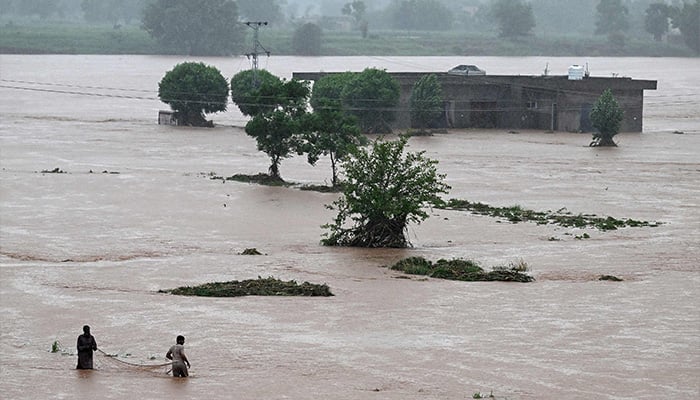Chandigarh (Gurpreet Singh): Punjab is facing the brunt of continuous monsoon showers, with the Meteorological Department issuing an orange alert for nine districts and a yellow alert for the rest of the state. The situation has worsened due to heavy rainfall in Himachal Pradesh and Jammu & Kashmir, which has caused an increase in water levels of key dams and rivers flowing through Punjab.
The Ravi River has swollen sharply following the release of excess water from the Ranjit Sagar Dam, leaving several areas of Pathankot and Gurdaspur partially cut off. In Makora Patan, nearly seven villages have lost direct connectivity, forcing residents to depend on boats for movement and supplies.
Authorities have ordered the closure of schools in Jalandhar, Kapurthala, Pathankot, Gurdaspur, and select blocks of Amritsar, while nearly 20 villages in Fazilka district will see schools remain shut until the situation improves.
Meanwhile, water discharged from the Bhakra Dam has pushed the Sutlej River’s water levels up, affecting parts of Tarn Taran, Ferozepur, and Fazilka. While officials have said that the Sutlej remains within the danger mark, precautionary steps are being taken to prevent flooding in vulnerable areas.
Residents in flood-hit zones say they have been stranded since August 11, with daily routines completely disrupted. “Even short distances take an hour by boat. Every time we run out of food, we have to risk going out again for rations,” a local resident explained.
Forecast and Temperature Update
The orange alert districts include Pathankot, Gurdaspur, Amritsar, Tarn Taran, Kapurthala, Jalandhar, Hoshiarpur, Rupnagar, Fatehgarh Sahib, and Patiala. Other districts remain under a yellow alert. By Tuesday, the warning will scale down to Pathankot and Gurdaspur, though a fresh Western Disturbance from August 29 could trigger another spell of heavy rain in the northern belt.
On Monday, the state recorded significant showers: 55.5 mm in Ferozepur, 37 mm in Pathankot, 20 mm in Amritsar, 20 mm in Hoshiarpur, 10.5 mm in Mohali, 7.2 mm in Ludhiana, and 5.5 mm in Rupnagar. Despite the rainfall, the maximum temperature rose slightly, though it still remained below normal seasonal averages.
Officials have urged people living near riverbanks to remain alert and avoid unnecessary movement, assuring that disaster management teams and local administration are keeping a close watch on the situation.

